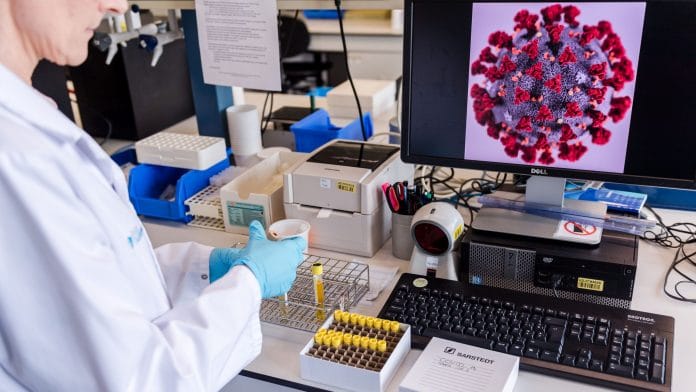In nations around the world, the epidemiological number now getting all the attention is R, the effective reproduction number, which reflects the average number of new coronavirus cases resulting from a single infection. Germany estimates its R is now around 0.9, meaning the epidemic is waning there, if slowly. Estimates from two weeks ago in the U.S. put R in most states just above 1, which explains why the U.S. infection rate is still rising.
Authorities everywhere hope to make R less than 1 and keep it there, which makes sense. Yet it is important to remember that the coronavirus spreads not as an average, but one person at a time. Hence, values of R will vary by location — tending to be high, for example, where people don’t or can’t distance themselves very well. And bad stuff can happen even if R is less than 1; not infrequently, one new infection will still give rise to hundreds of further infections. That’s how statistics work.
Getting the overall average R below 1 is a worthwhile goal, but it’s only a start. Any region doing so should still expect to see fast infectious growth in some local groups, as well as surprisingly large outbreaks that could put extreme stress on local health facilities.
A current and tragic example is what is happening to the Navajo Nation, the largest American Indian reservation in the U.S. As of last week, the Navajo Nation had reported nearly 3,000 cases and 98 confirmed deaths from the virus, and a higher coronavirus death rate than almost every state in the country. Fully 55% of all of New Mexico’s confirmed cases are among American Indians, five times their fraction in the population. The value of R is clearly higher in the Navajo community than elsewhere.
Local fluctuations like this should not be surprising, as computer scientist Cristopher Moore of the Santa Fe Institute emphasized in an illuminating recent essay. He also made another important point, which is that large outbreaks can still occur even with an R less than 1. If we suppose that R=0.8, it’s easy to calculate that one new infection should lead on average to a total of five further infections. Again, that’s on average — the actual numbers from each new infection will fluctuate due to chance.
Those fluctuations can be large. Moore ran some simple computer simulations of 100 random outbreaks. Most were small (the average size was five), but about 1 percent had 50 people or more. As R goes up and gets closer to 1, the chance for large outbreaks grows. With an R of 0.9, the average outbreak size is 10, with 1% infecting 140 or more people. One percent may seem unimportant, but this means that of 100 small towns experiencing one new infection, it’s quite likely that one of them will see an outbreak of more than 100 further infections. If that town’s hospital can handle only 10 cases, it becomes a local crisis.
Another problem, Moore’s simulations suggest, is “super-spreading” events, which potentially expose more people. Think of gatherings at concerts, restaurants, or people working together in places such as mail sorting centers or pork processing plants. Including this possibility, even though the average outbreak size is still five, outbreaks of over 600 become quite plausible. This brings home the risks inherent in trying to “get back to normal” as quickly as possible.
Moore’s point is statistical: Averages are useful, but they’re also crude and leave a lot out. The average R in any state or nation offers a misleading view of risks, as an epidemic may still be thriving in some spots or among some groups even with an R below 1. Surprisingly large outbreaks remain possible just due to chance.
Seeing an R of less than 1 is no reason to relax or to expect an easy road ahead. There will be further flare-ups, easily large enough to overwhelm local resources. There’s no easy fix, but there is a fix: remaining patient, washing hands and wearing masks, and, most of all, pushing for vastly ramped-up testing and contact tracing so we can identify and respond to local outbreaks where and when they emerge. -Bloomberg
Also read: R0 at 1.27 but experts say India yet to hit Covid peak, lockdown alone can’t end pandemic






